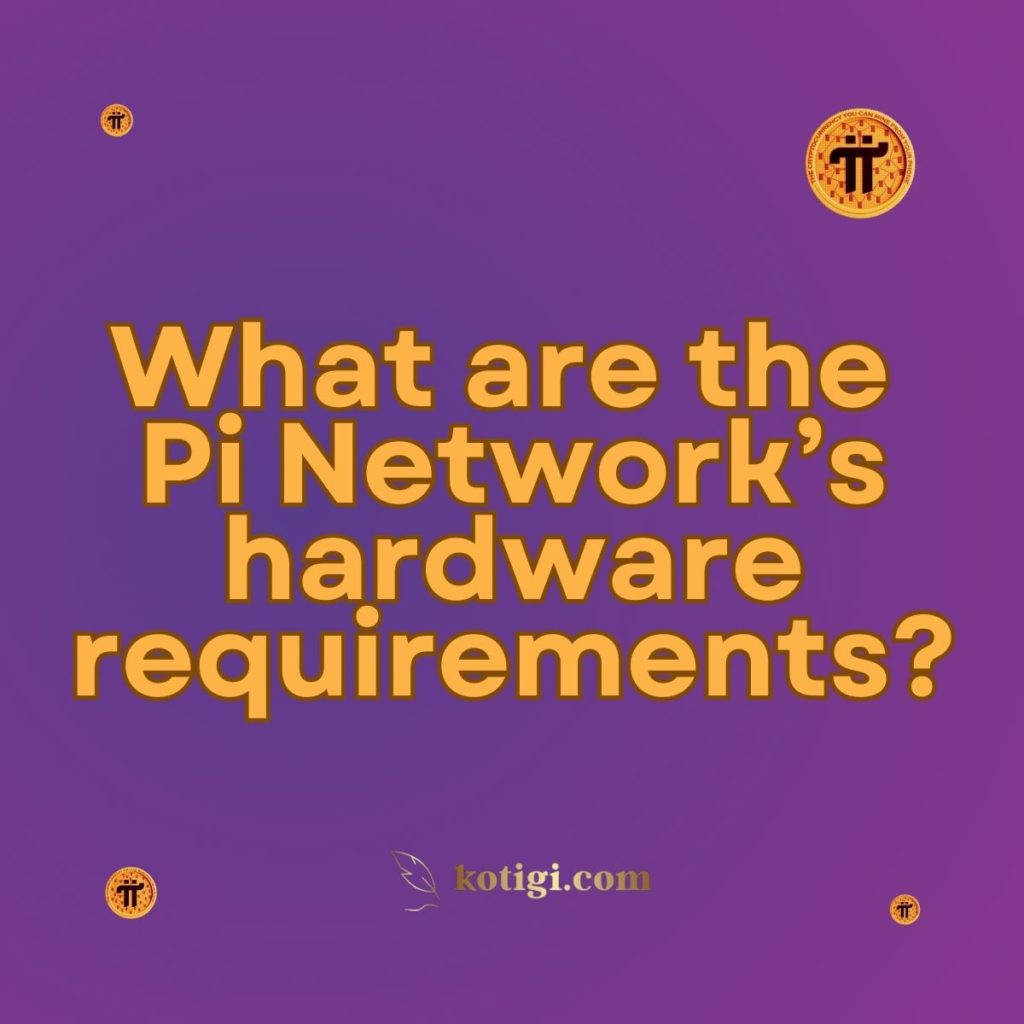
What are the Pi Network’s hardware requirements?
Pi Network’s hardware requirements are minimal, allowing users to mine cryptocurrency using standard mobile devices without the need for expensive equipment, thereby promoting accessibility and inclusivity in the cryptocurrency space.
Introduction
As cryptocurrencies gain traction, the demand for user-friendly and accessible platforms becomes increasingly important. Pi Network is designed to democratize access to cryptocurrency by allowing users to mine coins using their mobile devices, which significantly lowers the barrier to entry. This post will explore the hardware requirements for participating in Pi Network, focusing on the devices needed for mining, the role of network nodes, and the considerations for maintaining optimal performance. Understanding these requirements is crucial for anyone looking to join the Pi Network and take part in its growing ecosystem.
Understanding Hardware Requirements in Cryptocurrency
Hardware requirements refer to the specific technical specifications needed for devices to run cryptocurrency applications effectively. In the case of Pi Network, these requirements are designed to be minimal, allowing a wide range of users to participate without needing high-end equipment.
Low hardware requirements are particularly important in the cryptocurrency space, as they enable more people to get involved, fostering greater adoption and community engagement. This accessibility is one of the cornerstones of Pi Network’s mission to make cryptocurrency available to everyone.
Mining on Mobile Devices
One of the most significant aspects of Pi Network is its ability to allow users to mine cryptocurrency directly from their mobile devices. This feature is designed to promote inclusivity and lower the entry barriers for potential miners.
Device Compatibility
Pi Network’s mobile application is compatible with a variety of smartphones, including both Android and iOS devices. Users do not need specialized mining equipment, which is often expensive and energy-intensive. As long as the smartphone meets basic functionality criteria, users can successfully participate in the mining process.
Performance Requirements
While the app can run on a wide range of devices, it is recommended that users have smartphones with at least 2 GB of RAM to ensure smooth operation. Devices with lower specifications may still run the app but could experience performance issues or slower mining rates.
Battery Considerations
Mining on mobile devices can consume battery life. Users are encouraged to monitor their battery levels and avoid running the app in extreme temperatures, as this can negatively impact both device performance and battery longevity.
Background Operation
The Pi Network app is designed to operate efficiently in the background, allowing users to continue using their phones for other tasks while mining. This capability enhances user experience and promotes continued engagement with the platform.
Network Nodes and Community Participation
In addition to individual mobile devices, Pi Network relies on a network of nodes to maintain its blockchain and facilitate transactions. These nodes are crucial for the overall functionality of the network.
Node Requirements
While individual users can mine Pi coins on their mobile devices, becoming a network node typically requires more robust hardware. Nodes help validate transactions and maintain the integrity of the blockchain. This often necessitates a stable internet connection and, in some cases, dedicated hardware.
Home-Based Nodes
Some users choose to run Pi Network nodes from their home computers. While there are no strict hardware requirements, having a computer with a reliable processor and a good amount of RAM (at least 4 GB) can enhance the performance of a node, enabling it to handle transaction validations more effectively.
Network Stability
The collective power of all participating nodes contributes to the overall stability and reliability of the Pi Network. A diverse array of nodes ensures that the network remains resilient against potential disruptions and attacks.
Incentives for Participation
Users who operate nodes may receive additional rewards for their contributions to the network. This incentivizes users to invest in the necessary hardware and participate actively in maintaining the ecosystem.
General Considerations for Optimal Performance
While Pi Network aims to make participation as accessible as possible, there are general best practices to ensure optimal performance for both mobile mining and node operation.
Regular Software Updates
Keeping the Pi Network app and any related software up-to-date is crucial for security and performance. Regular updates often include bug fixes and performance enhancements that can improve mining efficiency.
Device Maintenance
Users should regularly check their device’s performance and clear unnecessary applications to free up system resources. This practice helps ensure that the Pi Network app runs smoothly and can maximize mining output.
Connectivity
A stable internet connection is essential for both mobile miners and network nodes. Users should aim for a reliable Wi-Fi or data connection to minimize interruptions during the mining process.
Resource Monitoring
Users are encouraged to monitor their device’s resource usage, including CPU and memory. This practice can help identify any issues that may arise during mining, allowing users to take corrective action promptly.
Conclusion
Pi Network’s hardware requirements are designed to be minimal, making cryptocurrency mining accessible to a broader audience. With the ability to mine using standard mobile devices, Pi Network promotes inclusivity and engagement within the cryptocurrency space. By understanding the hardware requirements for mobile mining and network nodes, users can effectively participate in the Pi Network ecosystem and contribute to its growth and success.
Key Takeaways:
- Pi Network allows users to mine cryptocurrency using standard mobile devices, promoting accessibility and inclusivity.
- The mobile app is compatible with a wide range of smartphones, requiring at least 2 GB of RAM for optimal performance.
- Users are encouraged to monitor their device’s battery life and performance while mining.
- Network nodes require more robust hardware but can also be run on home computers with stable internet connections.
- Regular software updates and device maintenance are crucial for ensuring optimal performance in mining and node operation.
- A stable internet connection is essential for minimizing interruptions and maximizing mining efficiency.


